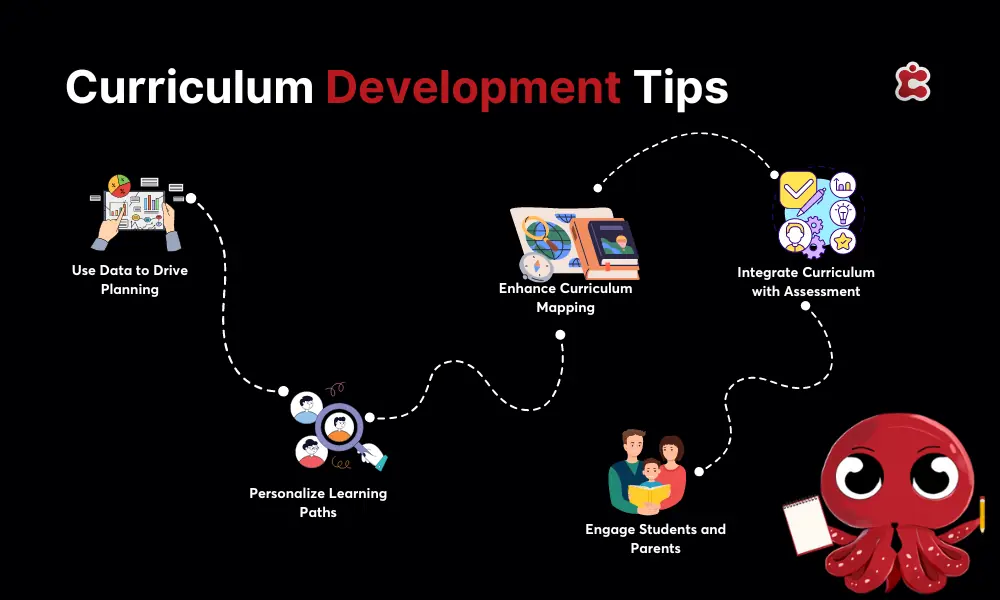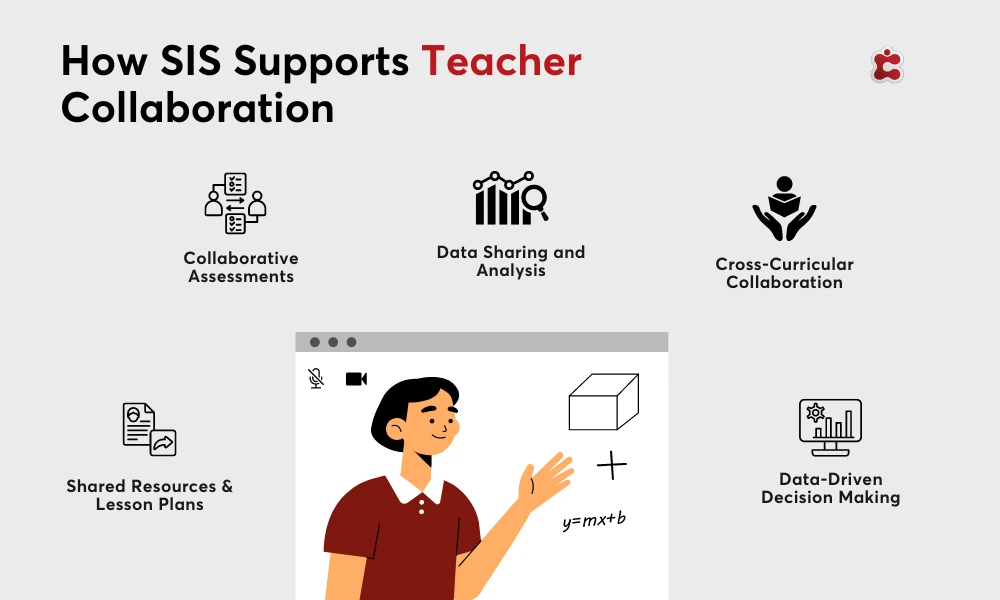If you have ever attempted to create a curriculum, you know that the task is not for the faint-hearted. Crafting a curriculum that truly meets the needs of every student while adhering to educational standards can feel like trying to solve a complex puzzle with constantly changing pieces. Yet, a well-designed curriculum is the cornerstone of an effective educational experience, influencing how students learn, grow, and achieve their potential.
However, the systems used in your school can provide a helping hand, specifically your Student Information Systems (SIS). Far more than just a database, SIS offers a suite of powerful tools that can simplify and enhance the curriculum development process.
From leveraging data to personalizing learning experiences, we’ll cover practical tips and strategies for creating a curriculum that meets educational standards and truly supports your students’ success.
Let’s dive in.

1. Use Data to Drive Planning
When it comes to refining your curriculum, having access to comprehensive data can make all the difference. Student Information Systems provide a treasure trove of metrics that can help you make informed decisions and tailor your curriculum to better meet student needs. SIS tracks a wide range of performance metrics, including:
- Grades and test scores
- Attendance records
- Assignment completion rates
- Behavior and participation levels
- Special needs and accommodations
- Engagement with online learning tools
- Progress on individual learning goals
By analyzing these metrics, you can gain valuable insights into how well your curriculum is working and where adjustments might be needed. Trends in student performance over time can reveal emerging needs and gaps. For instance, if you notice a consistent decline in test scores in a particular subject area, it may indicate that the current curriculum needs to be reassessed and updated. Tracking these trends allows you to adapt your curriculum proactively, addressing issues before they become larger problems.
2. Personalize Learning Paths
In K12 education, one-size-fits-all solutions rarely meet every student’s needs. Personalizing learning paths with your SIS ensures you create an educational experience tailored to each student’s unique strengths and challenges.
Individual Learning Plans
With SIS, you can develop detailed individual learning plans based on comprehensive student data. By analyzing performance metrics, learning preferences, and specific needs, you can create customized plans that address each student’s goals. This means that instead of following a generic curriculum, students receive targeted instruction that helps them thrive.
Adaptive Learning
Adaptive learning technologies integrated into your SIS can adjust content and instructional methods based on real-time student performance. As students interact with learning materials, the system dynamically alters the difficulty level, introduces supplementary resources, or adjusts the pace to better suit their needs.
3. Enhance Curriculum Mapping
SIS allows you to integrate state and national standards directly into your curriculum planning. With its robust database, you can cross-reference your curriculum content with the standards to ensure complete alignment. This means you can easily identify any gaps or areas that need adjustment, ensuring that your curriculum not only meets regulatory requirements but also provides a comprehensive educational experience. By having this alignment at your fingertips, you can maintain a consistent educational quality and prepare your students for standardized assessments with confidence.
Here are some tools within your SIS to help with your curriculum mapping
- Curriculum Design Modules: Create and organize curriculum units and lesson plans aligned with educational standards.
- Standards Alignment Features: Cross-reference and map curriculum content against state and national standards.
- Assessment Integration: Link assessments directly with curriculum objectives to ensure all standards are covered.
- Visualization Tools: Use visual mapping tools to see how units, lessons, and assessments interconnect.
- Collaborative Planning: Share and collaborate on curriculum maps with other educators to ensure coherence and consistency.

4. Integrate Curriculum with Assessment
Integrating assessments with your curriculum is key to ensuring that what you teach is effectively evaluated and that students receive the feedback they need to succeed. SIS platforms offer powerful tools to integrate assessments directly with your curriculum. This means you can align tests, quizzes, and assignments with specific learning objectives and standards. By embedding assessments within the curriculum, you ensure that evaluation methods are consistent with what students are expected to learn.
One of the standout benefits of using SIS is the ability to provide real-time feedback to students. As they complete assessments and assignments, SIS can instantly process and deliver feedback, allowing students to understand their performance and areas for improvement without delay. It also SIS at collecting and analyzing assessment data. By leveraging these insights, you can track trends and identify areas where the curriculum may need adjustment. Regular analysis of assessment data ensures that your curriculum remains dynamic and responsive, continually evolving to meet the needs of your students.
5. Engage Students and Parents
Engaging students and parents in the educational process is crucial for a successful curriculum.
Here’s how SIS can make a difference:
1. Student Portals: SIS students provide students with easy access to learning materials, assignments, grades, and progress reports. By having all this information at their fingertips, students can stay organized, track their performance, and take charge of their learning journey.
2. Parent Communication: SIS improves communication with parents by offering platforms where they can stay informed about curriculum changes, their child’s progress, and classroom expectations. Parents can view grades, attendance records, and upcoming assignments, allowing them to better support their child’s education.
3. Feedback Mechanisms: Collecting and incorporating feedback from both students and parents is essential for refining your curriculum. SIS tools can facilitate surveys, polls, and feedback forms that make it easy to gather insights on what’s working and what needs improvement.
Classter’s SIS for Curriculum Development
When it comes to developing an effective curriculum, Classter’s Student Information System is your ultimate ally. Our platform is specifically designed to support and enhance curriculum development, making it easier for educators to create, manage, and refine their educational offerings.
Classter’s SIS provides a comprehensive framework for curriculum design, allowing you to map out units, lessons, and assessments with ease. Our system helps ensure that every component aligns with educational standards and learning objectives, facilitating a cohesive and well-structured curriculum.
With Classter, you can leverage powerful data analytics to gain insights into student performance and curriculum effectiveness. Our SIS offers detailed reports and trend analysis, helping you make data-driven decisions to adjust and improve your curriculum based on real-time feedback and performance metrics.
Discover how Classter’s SIS can help you create a dynamic and responsive curriculum that meets the needs of all your students. Ready to take your curriculum to the next level? Get started with Classter today.
FAQ’s
Student Information Systems (SIS) provide comprehensive metrics such as grades, attendance, and engagement levels. By analyzing these metrics, educators can identify trends and gaps, allowing them to refine the curriculum to better meet students’ needs.
An SIS typically tracks grades and test scores, attendance records, assignment completion rates, behavior and participation levels, special needs and accommodations, engagement with online tools, and progress on individual learning goals.
Classter’s SIS provides a comprehensive framework for curriculum design, enabling educators to map out units, lessons, and assessments. It ensures that all curriculum components align with educational standards and learning objectives.

